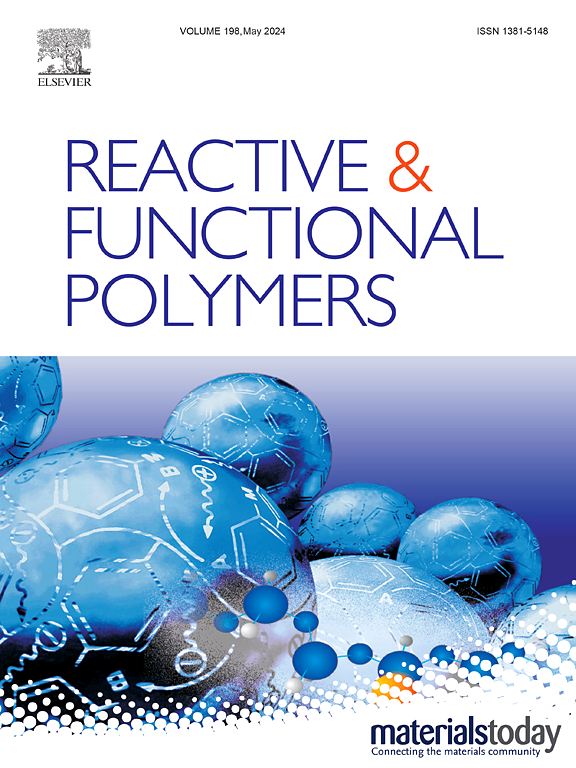Nickel-plated cyanate Ester/melamine shape memory composites for stable electromagnetic shielding switch, infrared stealth, and flame retardancy
IF 4.5
3区 工程技术
Q1 CHEMISTRY, APPLIED
引用次数: 0
Abstract
Military equipment must receive signals but is prone to malfunction due to electromagnetic interference. Moreover, operational temperature variations can be detected by infrared sensors, leading to potential exposure. Therefore, developing materials that integrate electromagnetic shielding switches with infrared stealth capabilities is crucial for enhancing target security. This study investigates a novel composite material that combines shape memory polymer (SMP) and conductive layers for integrated functionality. Utilizing melamine sponge as the substrate, a cyanate ester (CE)-nitrile rubber (NR) SMP coating is applied via dip-coating, allowing the sponge to self-fixate after deformation. The SMP demonstrates stable shape recovery. Subsequently, a conductive nickel layer is added through keratin modification and chemical plating, providing electromagnetic shielding effectiveness exceeding 30 dB and reducing infrared emissivity to 0.6. The composite material is capable of achieving controllable electromagnetic shielding switches of 35 dB and 15 dB. It maintains excellent electromagnetic shielding and infrared stealth capabilities even under acid rain conditions and extreme temperature variations. This innovative approach holds significant promise for applications requiring simultaneous electromagnetic and infrared protection.

用于稳定电磁屏蔽开关、红外线隐身和阻燃的镀镍氰酸酯/三聚氰胺形状记忆复合材料
军事装备必须接收信号,但容易因电磁干扰而发生故障。此外,工作温度的变化也会被红外传感器探测到,从而导致潜在的暴露。因此,开发集电磁屏蔽开关和红外隐身功能于一体的材料对于提高目标安全性至关重要。本研究调查了一种新型复合材料,该材料结合了形状记忆聚合物(SMP)和导电层以实现集成功能。该材料以三聚氰胺海绵为基材,通过浸涂工艺涂覆氰酸酯(CE)-丁腈橡胶(NR)SMP 涂层,使海绵在变形后能自我固定。这种 SMP 具有稳定的形状恢复能力。随后,通过角蛋白改性和化学镀添加导电镍层,使电磁屏蔽效果超过 30 分贝,红外线发射率降至 0.6。这种复合材料能够实现 35 dB 和 15 dB 的可控电磁屏蔽开关。即使在酸雨条件和极端温度变化下,它也能保持出色的电磁屏蔽和红外线隐身能力。这种创新方法为需要同时提供电磁和红外线防护的应用带来了巨大前景。
本文章由计算机程序翻译,如有差异,请以英文原文为准。
求助全文
约1分钟内获得全文
求助全文
来源期刊

Reactive & Functional Polymers
工程技术-高分子科学
CiteScore
8.90
自引率
5.90%
发文量
259
审稿时长
27 days
期刊介绍:
Reactive & Functional Polymers provides a forum to disseminate original ideas, concepts and developments in the science and technology of polymers with functional groups, which impart specific chemical reactivity or physical, chemical, structural, biological, and pharmacological functionality. The scope covers organic polymers, acting for instance as reagents, catalysts, templates, ion-exchangers, selective sorbents, chelating or antimicrobial agents, drug carriers, sensors, membranes, and hydrogels. This also includes reactive cross-linkable prepolymers and high-performance thermosetting polymers, natural or degradable polymers, conducting polymers, and porous polymers.
Original research articles must contain thorough molecular and material characterization data on synthesis of the above polymers in combination with their applications. Applications include but are not limited to catalysis, water or effluent treatment, separations and recovery, electronics and information storage, energy conversion, encapsulation, or adhesion.
 求助内容:
求助内容: 应助结果提醒方式:
应助结果提醒方式:


